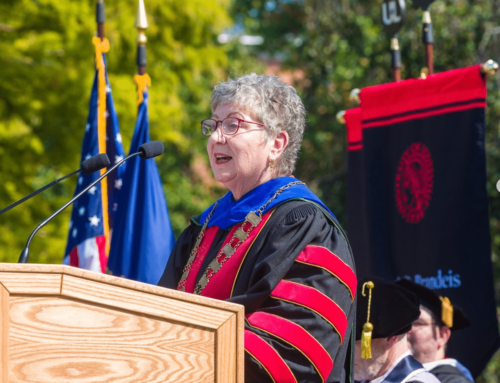Bored campus residents will be excited to learn that a secret world of treasure-hunting is literally right beneath their feet. Hidden among some of the most popular spots on campus, little black boxes filled with signed logs and trinkets connect people across the country, and some even around the world.
The name of the game is geocaching. The goal: to find treasure left behind by others and experience the great outdoors in a fun, new light.
A hybrid of hiking and puzzle-breaking, geocaching works both the body and the mind. Equipped with a GPS or iPhone, geocachers hide camouflage boxes in their favorite hiking or walking spots. Other hunters can go onto the official geocaching Web site and find the GPS coordinates of the spot. It’s not always as easy as it seems. Many players include riddles and hints in the description of the cache at the location.
Most students pass by the Confederate Army Memorial on the University of Louisville’s campus, not thinking much of it. But if one were to look very closely, and take a moment to think, they would find a hidden cache.
On the north side of campus, a plexiglas bus stop marks one of the first geocaches that was placed on Louisville’s campus. Hunters may search high and low—under benches and on roofs. However, the brain is the most important tool, because the riddles do not always prove to be that easy.
Hunters are encouraged to create their own caches and post them for others to find. It is a free way to share some favorite spots around the city or in nature. A taped-up tennis ball canister, or even a tiny film canister (called a microcache), is all players need to get started. They hide their treasure, along with a paper log for hunters to record their names upon finding the cache.
The game is global, with over 900,000 active geocaches around the world. Many players geocache on their vacations, because they believe it is a great way to experience a new place in a natural, fun way. Also, they think these stipulations make the contents of a particular cache an exciting mystery.
“It’s an adventure to find hidden treasures,” said Joshua Howard, a junior electrical engineering major. “Actually, there are several in Central Park that are really fun to find. I didn’t know there were any on campus, but I would be interested in finding them.”
Geocaching operates on the trust of its players. If the cache is found, it is stressed that the person preserves it. Secrecy is a very important element, because it makes the game mysterious. Hunters may remove items from the caches, but they are encouraged to put one of their own in its place. Items have ranged from packets of Jell-O to miniature collectible coins.
The hobby is unknown to most people. Several students, when asked if they have ever heard of or participated in geocaching, looked on with confused expressions.
“I have no idea what it is,” said Katrina Neubauer, a junior health communication major. “But I love hiking and it would definitely be something worth trying.”
People of all ages are encouraged to geocache. Some people go out to hunt with their grandparents, and others go with friends on a Saturday afternoon for something to do. Many people blog about their experiences. Regardless of the actual treasure found, an afternoon hunting and puzzle-solving with companions seems to be the best part for many participants.
For stories and links to more sites, visit the official geocaching Web site, geocaching.com. With over ten caches hidden on campus, interested geocachers can get started anytime they want.






